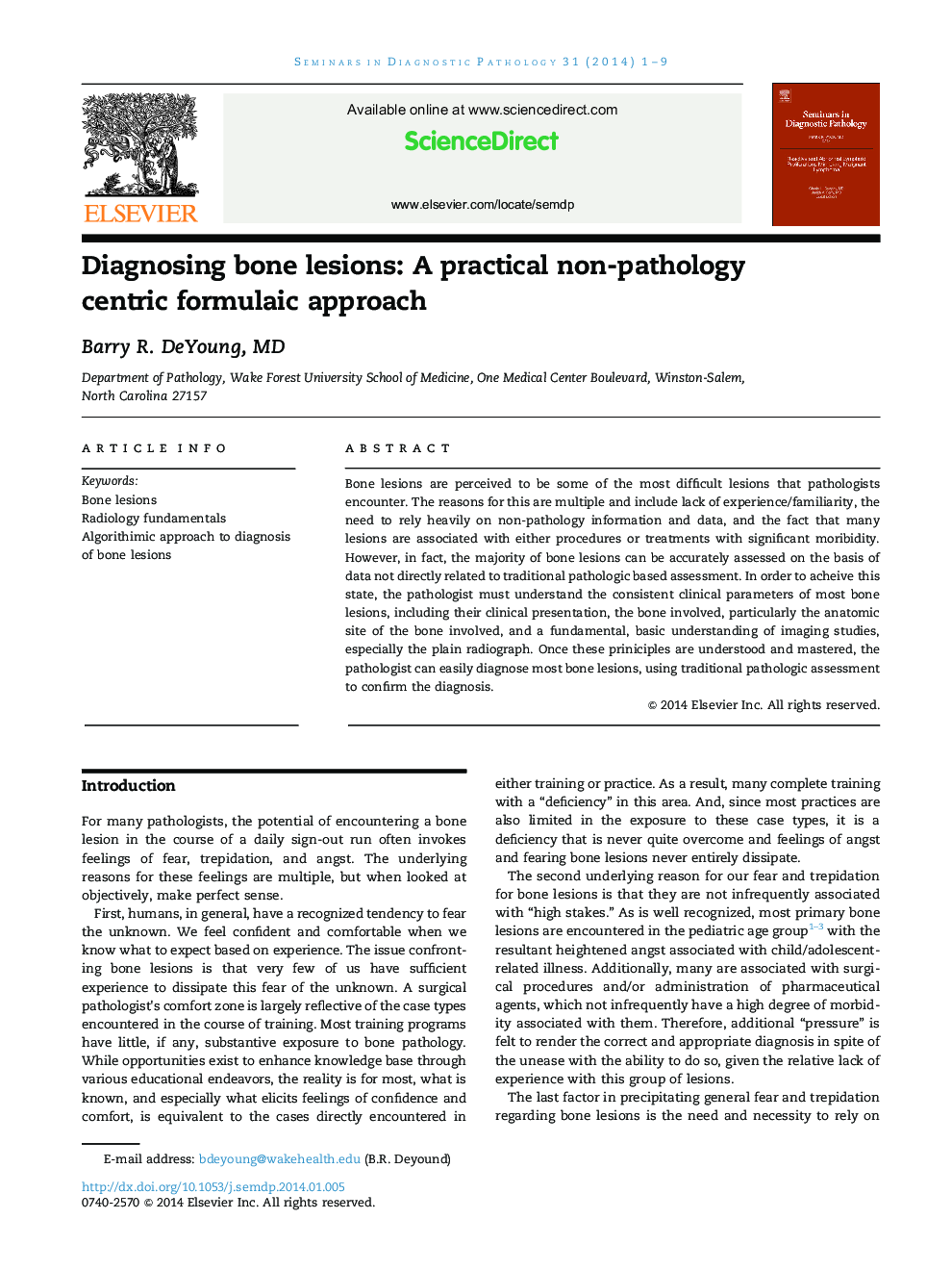| Article ID | Journal | Published Year | Pages | File Type |
|---|---|---|---|---|
| 4138359 | Seminars in Diagnostic Pathology | 2014 | 9 Pages |
Bone lesions are perceived to be some of the most difficult lesions that pathologists encounter. The reasons for this are multiple and include lack of experience/familiarity, the need to rely heavily on non-pathology information and data, and the fact that many lesions are associated with either procedures or treatments with significant moribidity. However, in fact, the majority of bone lesions can be accurately assessed on the basis of data not directly related to traditional pathologic based assessment. In order to acheive this state, the pathologist must understand the consistent clinical parameters of most bone lesions, including their clinical presentation, the bone involved, particularly the anatomic site of the bone involved, and a fundamental, basic understanding of imaging studies, especially the plain radiograph. Once these priniciples are understood and mastered, the pathologist can easily diagnose most bone lesions, using traditional pathologic assessment to confirm the diagnosis.
